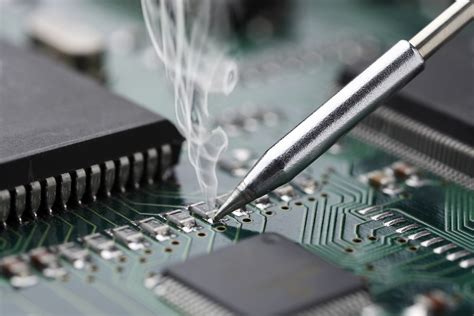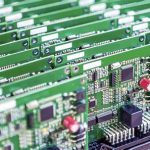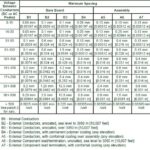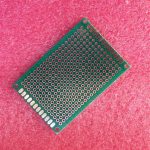What is PCB assembly?
PCB assembly is the process of soldering or mounting electronic components onto a printed circuit board (PCB). The PCB serves as the foundation for the electronic device, providing electrical connectivity and mechanical support for the components. PCB assembly can be done manually for small-scale prototypes or low-volume production, but automated assembly lines are typically used for high-volume manufacturing to ensure speed, accuracy, and consistency.
PCB Assembly Process
The PCB assembly process generally follows these steps:
-
Solder Paste Application: Solder paste, a mixture of tiny solder particles and flux, is applied to the PCB’s pads where components will be placed. This is typically done using a stencil and a solder paste printer.
-
Component Placement: Surface mount components are placed onto the PCB using pick-and-place machines. These machines use computer-controlled nozzles or grippers to pick up components from reels or trays and place them accurately on the PCB.
-
Reflow Soldering: The PCB with components placed on it goes through a reflow oven. The oven heats the board to a specific temperature profile, melting the solder paste and creating permanent solder joints between the components and the PCB pads.
-
Inspection: After soldering, the assembled PCB undergoes visual and automated optical inspection (AOI) to check for defects such as missing components, misaligned components, solder bridges, or insufficient solder joints.
-
Through-Hole Assembly: If the PCB has through-hole components, they are inserted manually or by machines into the corresponding holes on the PCB. The leads of these components are then soldered to the PCB, either by hand or using a wave soldering machine.
-
Final Inspection and Testing: The fully assembled PCB goes through final visual inspection and functional testing to ensure it meets the required specifications and functions as intended.
Types of PCB Assembly Services
PCB assembly services can be categorized based on the level of support provided by the service provider:
PCB Fabrication Only
Some companies offer only PCB fabrication services, where they manufacture the bare PCB according to the customer’s design files. The customer is responsible for sourcing components and handling the assembly process.
PCB Assembly (PCBA) Only
PCBA-only services focus on assembling components onto a PCB provided by the customer. The customer is responsible for supplying the bare PCB and all necessary components.
Turnkey PCB Assembly
Turnkey PCB assembly is a comprehensive service where the provider handles both PCB fabrication and assembly. The customer provides the PCB design files, bill of materials (BOM), and any special instructions. The turnkey service provider takes care of sourcing components, fabricating the PCB, assembling the components, and testing the final product. This is the most convenient option for customers who want a complete solution from a single source.
Benefits of Turnkey PCB Assembly Services
Turnkey PCB assembly offers several advantages over separate fabrication and assembly services:
-
Simplicity: Dealing with a single provider for both PCB fabrication and assembly simplifies the process, reducing the need for coordination between multiple suppliers.
-
Time Savings: Turnkey services can save time by eliminating the need for the customer to manage multiple stages of the process. The service provider can optimize the workflow to minimize lead times.
-
Cost Efficiency: Turnkey providers often have established relationships with component suppliers and can negotiate better prices due to their higher purchasing volumes. They can also optimize the process to minimize waste and rework.
-
Expertise: Turnkey service providers have experience in both PCB fabrication and assembly, allowing them to offer advice and support throughout the entire process.
-
Quality Control: With a turnkey service, the provider has full control over the quality of the PCB from fabrication to final assembly, enabling them to maintain consistent quality standards.

Choosing a Turnkey PCB Assembly Service Provider
When selecting a turnkey PCB assembly service provider, consider the following factors:
Technical Capabilities
Ensure that the provider has the necessary equipment, expertise, and certifications to handle your specific PCB assembly requirements. Consider factors such as:
- Supported PCB technologies (e.g., HDI, flexible, rigid-flex)
- Component types and packages (e.g., BGA, QFN, 01005)
- Soldering techniques (e.g., reflow, wave, selective)
- Inspection and testing capabilities (e.g., AOI, X-ray, ICT, functional testing)
Quality Management
Look for a provider with a robust quality management system, preferably certified to industry standards such as ISO 9001 or AS9100. Ask about their quality control processes, inspection methods, and failure analysis capabilities.
Experience and Reputation
Consider the provider’s experience in the industry and their track record with similar projects. Look for customer testimonials, case studies, and references to gauge their reputation and reliability.
Scalability and Flexibility
Choose a provider that can accommodate your current and future production needs. They should be able to handle both prototype and production quantities and offer flexibility in terms of lead times and order quantities.
Communication and Support
Effective communication is crucial for a successful turnkey PCB assembly project. Look for a provider that is responsive, proactive in addressing concerns, and offers clear communication channels. They should also provide technical support and guidance throughout the process.
Cost and Value
While cost is an important consideration, it should not be the sole deciding factor. Evaluate the overall value provided by the turnkey service, taking into account factors such as quality, reliability, and support. A lower-cost provider may end up costing more in the long run if they deliver subpar quality or have hidden charges.
PCB Assembly Service Comparison
Here is a comparison table of different types of PCB assembly services:
| Service Type | PCB Fabrication | Component Sourcing | PCB Assembly | Testing |
|---|---|---|---|---|
| PCB Fabrication Only | Yes | No | No | No |
| PCBA Only | No | Customer’s Responsibility | Yes | Limited |
| Turnkey PCB Assembly | Yes | Yes | Yes | Yes |
Frequently Asked Questions (FAQ)
1. What is the minimum order quantity (MOQ) for turnkey PCB assembly?
The minimum order quantity varies among service providers. Some providers specialize in low-volume production and offer MOQs as low as one piece, while others may have higher MOQs for cost efficiency. It’s best to discuss your specific requirements with potential providers.
2. How long does the turnkey PCB assembly process take?
The lead time for turnkey PCB assembly depends on various factors, such as the complexity of the PCB, the availability of components, and the production capacity of the service provider. Prototype quantities may be delivered within a few days to a couple of weeks, while larger production runs can take several weeks. Discuss your timeline requirements with the service provider to get a more accurate estimate.
3. Can I provide my own components for turnkey PCB assembly?
Some turnkey service providers allow customers to supply their own components, often referred to as consignment parts. However, the provider may have specific requirements for the condition, packaging, and labeling of these components. It’s essential to discuss this option with the provider and clearly communicate the details of the consignment parts.
4. How can I ensure the quality of the assembled PCBs?
To ensure the quality of the assembled PCBs, choose a turnkey service provider with a strong quality management system and proven track record. Discuss their quality control processes, inspection methods, and testing capabilities. You can also request a first article inspection (FAI) or a production part approval process (PPAP) to verify that the assembled PCBs meet your specifications.
5. What happens if there are issues with the assembled PCBs?
Reputable turnkey PCB assembly service providers have processes in place to handle issues or defects in the assembled PCBs. They should have a clear policy for reporting, investigating, and resolving problems, as well as offering appropriate corrective actions or replacements. Discuss the provider’s warranty, return, and rework policies before starting a project.
Conclusion
Turnkey PCB assembly services provide a comprehensive solution for customers who need both PCB fabrication and assembly. By outsourcing the entire process to a single provider, customers can save time, reduce costs, and ensure consistent quality. When choosing a turnkey service provider, consider factors such as technical capabilities, quality management, experience, scalability, communication, and overall value. By partnering with a reliable turnkey PCB assembly service provider, you can streamline your electronics manufacturing process and bring your products to market more efficiently.






Leave a Reply